|
Updated May 29, 2024 When Canon management decided on March 31, 1985 to embark on a two-year program to develop a completely clean-sheet auto focus (AF) 35mm SLR system, they were granting Minolta a two-year head-start in that burgeoning market. This was a result of the instantaneous success of the Minolta 7000, introduced almost two months before. Canon realized that their first FD-mount AF SLR, the T80, due to be introduced in April of that year, was completely outclassed by the 7000 and bold measures were thus imperative. Consequently, Minolta had the 35mm AF SLR market to itself for 14 months, until Nikon introduced their F-501 (N2020 in USA) in April 1986. Right on schedule, in time for their 50th anniversary as a camera manufacturer, Canon brought out the EOS 650 on March 1, 1987. Within two months, it became the top-selling AF SLR in Japan and Europe and was a match and more for the 7000 and F-501. But Minolta had not been sitting idly by. The summer of 1988 brought their second-generation enthusiast AF SLR, the Minolta 7000i, which was a huge jump forward from its not-exactly-ancient ancestor, as is usually the case in the early stages of the growth cycle of any technology. Canon had caught up to (and surpassed in a few areas) Minolta's and Nikon's first-gen AF SLRs, but how would the second generation of EOS fare against a much more sophisticated competitor?
0 Comments
Regular visitors to this site may have noticed a bit of a trend: As much as we love the classics, we also have a thing for "sleepers", those anti-Instygrammy, tacky Tik-Tok-immune cameras that do one thing: take great pictures ;-). And if you are looking to dabble in a bit of film, but don't feel like auctioning off a body part or two to look all the business, here is yet another option to consider... Although they came late to the 35mm Auto Focus (AF) SLR party in 1987 (trailing Minolta by just over two years, and Nikon by 11 months), when Canon debuted their EOS 650 (March 1987) and EOS 620 (May 1987) models, they rapidly closed the gap to their two main competitors. Within two months of its introduction, the EOS 650 became the best-selling 35mm SLR in Japan and Europe. The 650 was easily a match, technologically, for its main competitors: the Minolta 7000 and Nikon N2020 (F-501 outside North America). When combined with Canon's decade-long lead in marketing prowess, it was a recipe for success. However, Canon's initial delay in the AF market meant that they would not have their second-generation EOS models ready until 1990, while both Minolta and Nikon would both introduce theirs in 1988. As with any new technology, the improvements in early generations are markedly larger than in later ones. And so it was with AF SLRs. The Minolta 7000i and Nikon N8008 (F-801 outside North America) were massive leaps from their forebears and vaulted both back ahead of Canon in the AF techno-battle. How would Canon respond? Updated Mar. 8, 2024 So where does our fixation with Top Ten Lists come from, anyways? Letterman? The Ten Commandments? Well, if you can't beat 'em.....Here, for your casual perusal, is a chronological consideration of ten important Japanese SLRs that pushed the development of such cameras forward for over 30 years. This is not to say that these are the 10 "top" or "best" SLRs of all time (far be it for me to be the arbiter of such things ;-)), and some may be less familiar than others, but all of them had an undeniable effect on the industry or market as a whole. Let's dive in :-). Updated June 21, 2022 Canon's A-Series of 1976-85 was, unquestionably, the most commercially successful lineup in SLR history. In excess of 14 million bodies (divided among six models) were produced. The A-Series came...they saw...they conquered...and then they did what all empires eventually do...slid into oblivion. The AL-1 QF was the final desperate gasp for the chassis, as Canon sought to milk the last drop from its traditionally-styled SLRs, with the oh-so-'80s T-Series waiting in the wings. Along the way, it upheld the lofty A-Series' ideals of bargain-basement battery door latches, consumer-conscious construction, and Canon's time-honored tradition of over-promised performance resulting in mass consignments to drawers, closets, and attics ;-). What's that, your eyes are glazing over already?? Fear not, dear reader...you may well end up having a refreshing power nap before this is all over ;-). Updated Jan. 10, 2023 Although Canon was not the first to the 35mm lens-shutter AF (auto focus) party with their Sure Shot (aka AF35M in Europe, aka Autoboy in Japan) model, with it they did introduce the auto focus technology that would come to dominate that burgeoning market until digital came on the scene. Not to mention, the Sure Shot was the first compact 35mm to combine AF with automated film winding and rewinding at the push of a button, i.e. the first proper Point & Shoot. The Sure Shots would go on to be the most commercially successful P&S lineup for the next 25 years. Updated Nov. 10, 2022 Canon. The bane of the 35mm purist's existence. Has any other manufacturer done more to suck the soul out of these beautiful machines with microprocessors, green rectangles for grubby-fingered greenhorns, and punished us with a plethora of polycarbonate, penta-mirrored, pale imitations of a proper SLR? And worst of all, to dominate the market for the past four-plus decades while doing so?! Ugh, there will be copious amounts of antacids and Gravol needed to make it through this one ;-). But if Big C had been such a force since the mid-1970s, why would they need to "catch up"? Read on...if you dare...bwahahahahaha... In the first two parts (Part 1 & Part 2) of this series, a recurring cycle of market saturation and obsolescence as the drivers of the Japanese camera industry for the past five decades was clearly seen. The manufacturers relied upon a series of technological advances and clever marketing to combat these repetitive downturns. And as long as they remained the providers of such advances, their position as the standard-bearers of photographic capability remained secure. But in this 21st century, a major disruption has taken place, one that the Japanese camera companies collectively and individually failed to anticipate. Before we look at the magnitude of this disruption and its eventual outcome, let's briefly look at how things have gotten to this point. Updated June 18, 2022 In our previous article, we started searching for a possible precedent in the film SLR era for today's sea-change in the digital (and DSLR, in particular) age. Is Canon president Fujio Mitarai's forecast of a possible 50% reduction in digital camera sales within the next two years overly pessimistic? (UPDATE: As it turned out the decline from 2018 to 2020 came to 55%, so no it wasn't :-)) Sigma Corporation president Kazuto Yamaki's recent comparison of the current state of transition from DSLRs to Mirrorless ILCs (Interchangeable Lens Cameras) with the MF to AF SLR transition of the late-'80s begs further investigation. So, just how quickly did the transition from manual focus (MF) to auto focus (AF) SLRs as far as market dominance actually take in the late-1980's? Before we answer that, let's identify our Cast of Corresponding Characters. Updated June 18, 2022 "plus ça change, plus c'est la même chose" - Jean-Baptisite Alphonse Karr c. 1849 or as it is commonly rendered en Anglais: "the more things change, the more they stay the same" As of the spring of 2019, this maxim still rings true in the photographic equipment world (and the larger world in general :-)). ***FAIR WARNING*** - This series of articles contains numbers (please, no), history (bleccch!), and eventually, analysis (make it stop!). 678 Vintage Cameras cannot be held responsible for drowsiness, general lethargy or any other sleep-inducing effects should you choose to continue. Parallels are about to be drawn between the digital and film eras, which will be an immediate turnoff for adherents of the "either/or" crowd, and therefore an utter and complete waste of such a person's time. (As opposed to the standard waste of a person's time that this space traditionally occupies ;-)) Now that we've got that out of the way (is it too early in the spring for crickets to be out and about?), let's see how a 170-year-old saying relates to events in the camera industry today. In this first portion, we will look at the present state of affairs and some underlying factors, and Part 2 will deal with the breathtaking details of the Auto Focus revolution of the 1980s. (I swear I keep hearing crickets...) Updated Sept. 13, 2021 Canon the innovator...Canon the boundary pusher...Canon the...wait just a minute! Are we talking about the same Canon that moves today at what appears to be a less-than-glacial pace? Nope, we are talking about the Canon of over three decades ago...the vintage Canon ;-). A Canon that, while still the market leader, was determined to meet a declining SLR market with more than retrenchment. From an all-time peak of nearly 7.7 million SLRs sold in 1981, by 1983 sales for all brands of SLRs had fallen by over 30%. Sound familiar DSLR users? Canon had wrung the last drops from their A-series of SLRs (1976-84), the most successful line of manual focus SLRs ever, and the catalyst to the SLR boom of 1976-81. The question now facing Canon (along with very other SLR maker) was: Where to go from here? Their first response would be the T-series of SLRs (1983-1990). So how did that work out for them? From a sales perspective, the T-series failed to accomplish Canon's goal of revitalizing the SLR market. Each model seemed bedeviled by at least one Achilles' heel. But one thing was for certain, the problems came down to execution and timing, not a lackadaisical attitude on Canon's part. And ironically, out of the (relative) failures of the T-series would come Canon's greatest period of success, the seeds of which were sown by the most tragic of the Ts...the T90. In automotive circles, the "sleeper" has a long and roguish history. Take a plain-Jane car and throw some serious performance bits under the hood and prey upon the unsuspecting (bwahahaha). A frumpy four-door with a quiet (at least at idle) exhaust makes it even tastier :-). When it comes to old SLRs, there is no such post-purchase hopping-up per se, but there were enough models that followed the spirit of the sleeper as far as looks and features went to make things interesting. The bonus today is that you can snag one of these soporific snappers for a fair bit less than their more-celebrated contemporaries, while giving up very little (if any) outright performance. Now, if I happen to leave out your favorite flies-under-the-radar film-burner, don't get uptight. Feel free to mention my misses in the comments, and who knows, maybe we will have to do a sequel. So...in no particular order... Just sit right back and you'll hear a tale, a tale of a fateful slip that happened to three companies who thought they were so hip... In Part 1, we focused on Pentax, Olympus, Nikon, and Minolta, respectively, as the first companies to introduce production auto focus (AF) 35mm SLRs in the early to mid-1980s. Although Pentax was the first-mover (1981), and Olympus & Nikon followed two years later, it was not until the introduction of the trendsetting Minolta 7000 in February 1985 that the AF SLR truly came of age. This was borne out by the other three manufacturers' abrupt decision to adopt Minolta's idea of AF motor-in-body (MIB) design, abandoning their previous allegiance to the motor-in-lens (MIL) philosophy. These companies' next AF SLRs bore an uncanny resemblance to the all-conquering 7000, at least in the lens mount area ;-). Minolta appeared poised to dominate SLR sales for the foreseeable future, yet within three years, they would be toppled from the peak and by the time the early-'90s rolled around, they would be back in their familiar third-place sales position that they had held from the early-'70s onward. So, even being the first successful AF SLR manufacturer was no guarantee of being the long-term winner. How could that happen? This time, we will take a closer look at the reaction to the AF revolution by the then-biggest fish in the SLR pond. I don't know if Rodney Dangerfield was into photography, but if he was he must have used f/3.5 lenses, judging by the way he was always bugging his eyes out. Which would be understandable, because any half-baked photographer knows that f/3.5 is a raging vortex where photons go to die, leaving your eyes straining for the faintest trace of light. Not to mention the utter impossibility of achieving anything remotely resembling shallow depth of field (DOF) with such an infinitesimal iris. No proper lens jockey would be caught dead with such a miserable excuse for a photographic tool. So if you have any remaining shred of photographic self-respect, let me save you the trouble now of reading any further ;-). The 1980s were the heyday of the quality, yet relatively affordable, automatic auto focus (AF) 35mm camera. Competition was intense between manufacturers, and they were constantly trying to leapfrog one another in features and capability. Every year saw some kind of improvement until about 1988 or so, when the inevitable "race to the bottom" really started to heat up. Within this era, the years from 1983 to 1987 were arguably the high-water mark for quality and innovation, and some ingenious engineering. In this article, we are going to key in on a quirky category of cameras that served as a bridge between the original, fixed-focal-length AF point & shoots and the first P&S zooms: the temporary titans of P&S technology..the twin-lens (or bifocal) AFs. Canon got off to the slowest start of the original Big 4 Japanese camera makers (Minolta, Nikon, & Asahi Pentax were the others) when it came to SLR development and sales . This was partially due to their commitment to interchangeable lens rangefinders for longer than their competitors. By the mid-1960s, however, they had embarked on a slow but steady climb that would lead them to market dominance by the late-1970s. Their first truly competitive SLR was the FT of 1966, and it would spawn one of the finest series of mechanical-shuttered enthusiast SLRs of the age and Canon's most successful non-A-series manual focus model. The second- and third-iteration FTb & FTb-N would prove to be the backbone of Canon's amateur lineup in the first half of the '70s and sold extremely well while both Pentax and Minolta were facing declining sales of their excellent Spotmatic & SRT mechanical SLRs at that time. That alone makes it a pivotal model in Canon's history. But it is much more than a sales footnote, it was one of the best enthusiast-level SLRs of its day, and that makes it a great choice today for the film-SLR aficionado. You could call the FT the analog 5D of its era :-). Welcome to the final installment of our "Choosing Manual Focus Lenses" series. In this article, we will look at the larger picture of lens sets in general and also check out a few options for specialty optics, such as macros and shift lenses.
Zoom lenses really started to come into their own by the late-1970s and became standard equipment with most SLRs by the mid-'80s. Versatility was the name of the game, with such optics sometimes enabling a photographer to replace up to 3 primes with one lens. However, this was not a free lunch; there were always compromises involved. Welcome to Part 2 of Choosing Manual Focus Lenses. We will now delve deeper into the categories of focal lengths and the differences between them. As in the previous post, we will be looking at this in terms of vintage 35mm format manual focus (MF) lenses, but you can use the principles for more modern glass and other formats. WARNING - There may some numbers involved! (I'll try to control myself ;-)) Fun With Focal Lengths In 35mm format: "Normal" lenses range from 40 - 58mm (with 50mm being by far the most common and was the basic kit lens offered with SLRs for years); Wide-angles go from about 28 - 35mm; Extreme wide angles from 15 - 25mm; Ultra-wide angles are less than 15mm; Telephotos from 65 - 300mm; and Super Telephotos are greater than 300mm. All of these categories are approximate, but you get the general idea. We will look at single focal-lengths and, in the next article, discuss how zooms combine several focal lengths into one lens and the advantages/disadvantages of doing so. One of the most daunting experiences for an SLR owner can be deciding which lenses to choose to achieve their photographic goals. The sheer number of possibilities can seem overwhelming when trying to narrow things down to a manageable kit, both expense- and weight-wise. Further complicating matters is that what works well for someone else may be entirely different than what will be best for you. Choosing lenses goes beyond mere quantitative measurements. Your aesthetic sense of how you see the world around you, along with the genres of photography you pursue, and the conditions you will be working in all have a direct bearing on which lenses will be most suitable for you. Too many of us have learned the hard way about which lenses are best suited to our needs and abilities. Trial and error does often eventually lead us to the right conclusions, but with a considerable amount of wasted time, energy, and MONEY. Could there be a better way? Updated June 30, 2021 Welcome to our second system overview, this time featuring the Canon FL/FD system, in our "Choosing a Vintage SLR System" series. Following a brief introduction we will break things down via the format of 1) Lenses, 2) Bodies, 3) Flash, 4) Accessories, and 5) Reliability & Servicing. Canon was an early entrant into the SLR market in 1959 (the same year as Nikon) with its Canonflex model in what it called the R-mount. Compared to its competitors Asahi Optical Co. (Pentax), Chiyoda Kogaku (Minolta), and Nippon Kogaku (Nikon), Canon got off to a slower start in SLRs as far as sales went. This was due to a couple of factors: 1) Canon remained focused on the rangefinder market as the others went pretty much all-in on SLRs, and 2) the Flex and its immediate descendants the RP, and R2000 were quirky machines with a bottom plate-mounted film advance trigger which was rangefinder-derived. The R-mount, with its breech lock lens coupling, did serve as the basis for the succeeding FL and FD mounts, although it used different internal controls for aperture functions. With the final R-mount camera, the heavyweight RM (1962), Canon went more mainstream with the control configuration and it was their first SLR with a built-in meter. They still remained fourth in sales, however, because they trailed the other three manufacturers in camera/lens automation. 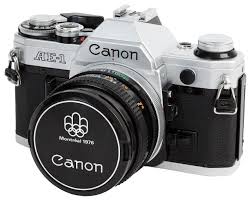 1976 Olympic Edition Canon AE-1 1976 Olympic Edition Canon AE-1 1976. A watershed moment in the history of the SLR (single-lens-reflex) camera. The year when, depending on your point of view, camera design and manufacturing quality began its slide into a pit of oblivion, or ushered in a new era of affordability and convenience, opening the doors of SLRdom to a whole new audience. Or maybe, like me, you can feel a bit of both ;-). Either way, the camera responsible is none other than the Canon AE-1, the best-selling film SLR of all time. To appreciate the impact that the AE-1 had on 35mm photography, it serves us well to remember the context of its arrival and subsequent domination of the market. Prior to the AE-1, SLRs had been the choice of professionals (particularly photojournalists) and enthusiasts, people who were not interested just in snapshots, but in the craft and art of photography. Having control over the different parameters of exposure was very high on their list of priorities and the SLR gave them that, as well as access to a wide variety of lenses and accessories. For the average consumer, whose top priorities are convenience and affordability, that was waayy too much camera for waaayyy too much money! Thus the conundrum Canon was facing by 1974: a small, nearly-saturated enthusiast SLR market versus a huge consumer (mass) market that up to this point was untouchable for reasons of cost and convenience. What could be done?
|
C.J. OdenbachSuffers from a quarter-century and counting film and manual focus SLR addiction. Has recently expanded into 1980's AF point and shoots, and (gack!) '90s SLRs. He even mixes in some digital. Definitely a sick man. Categories
All
Archives
June 2024
|
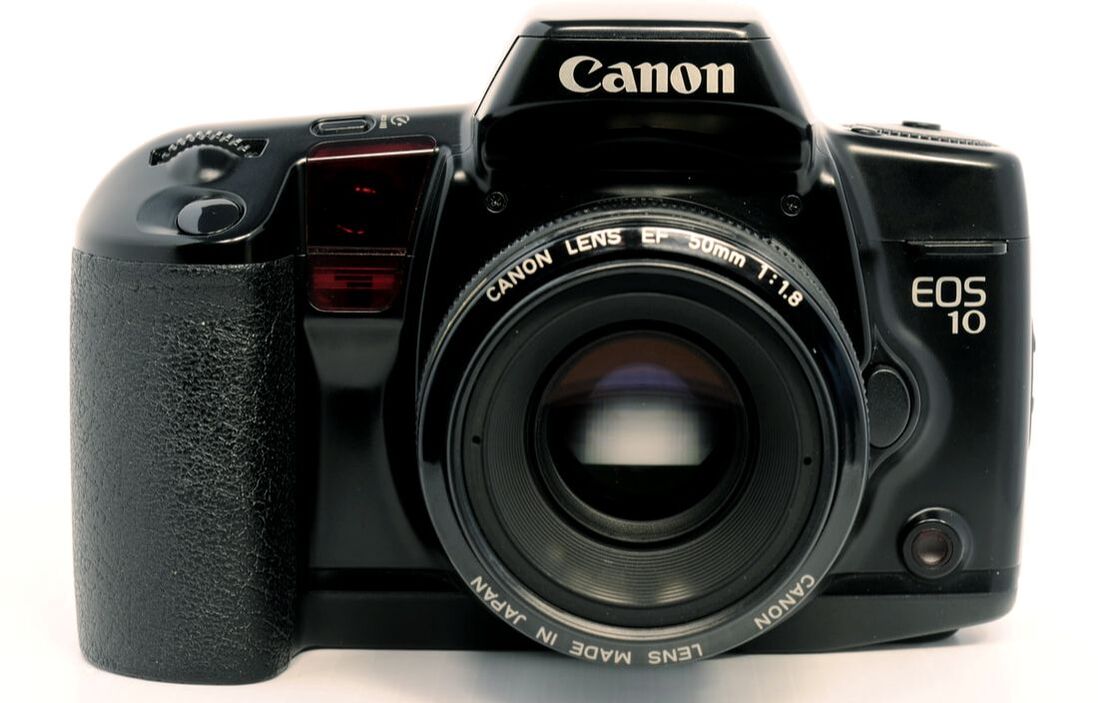
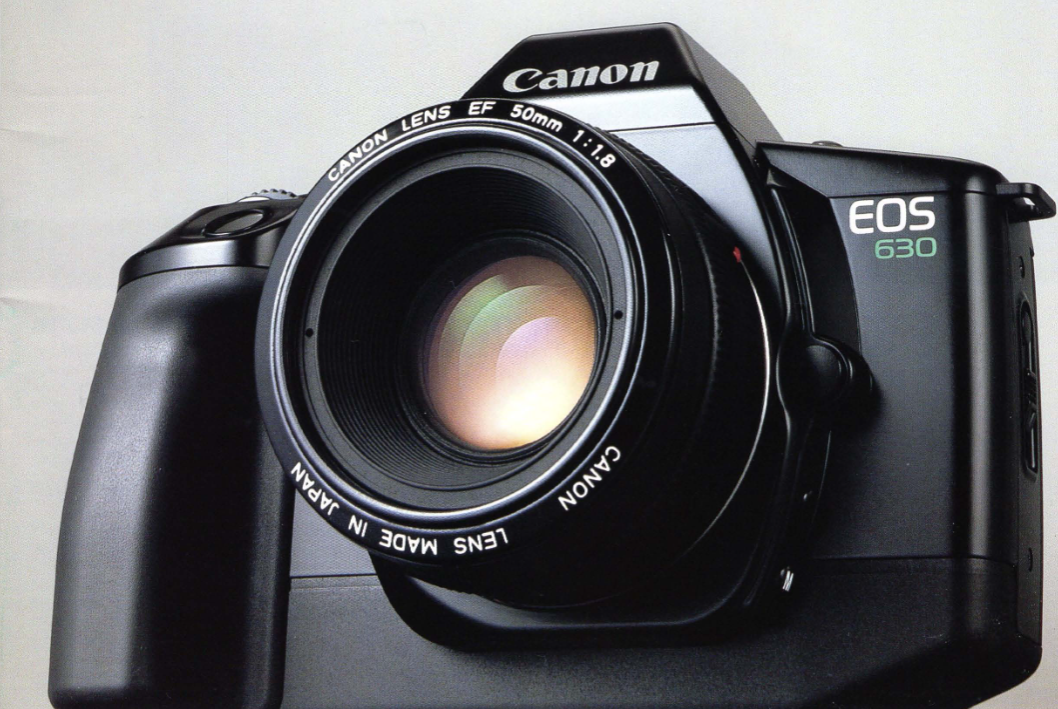
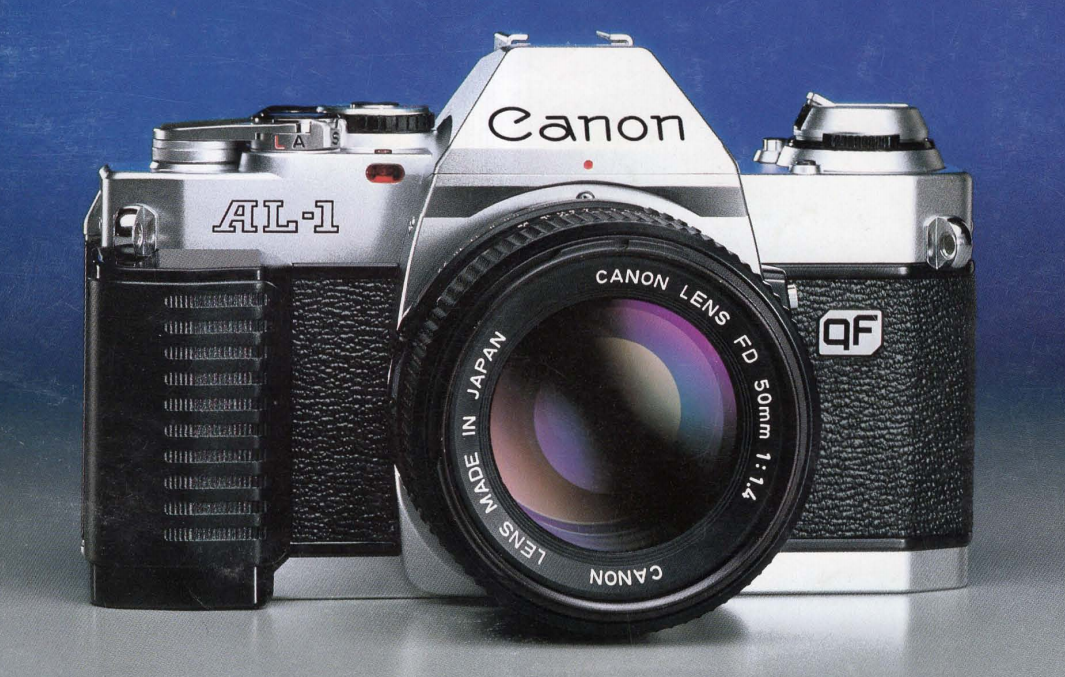
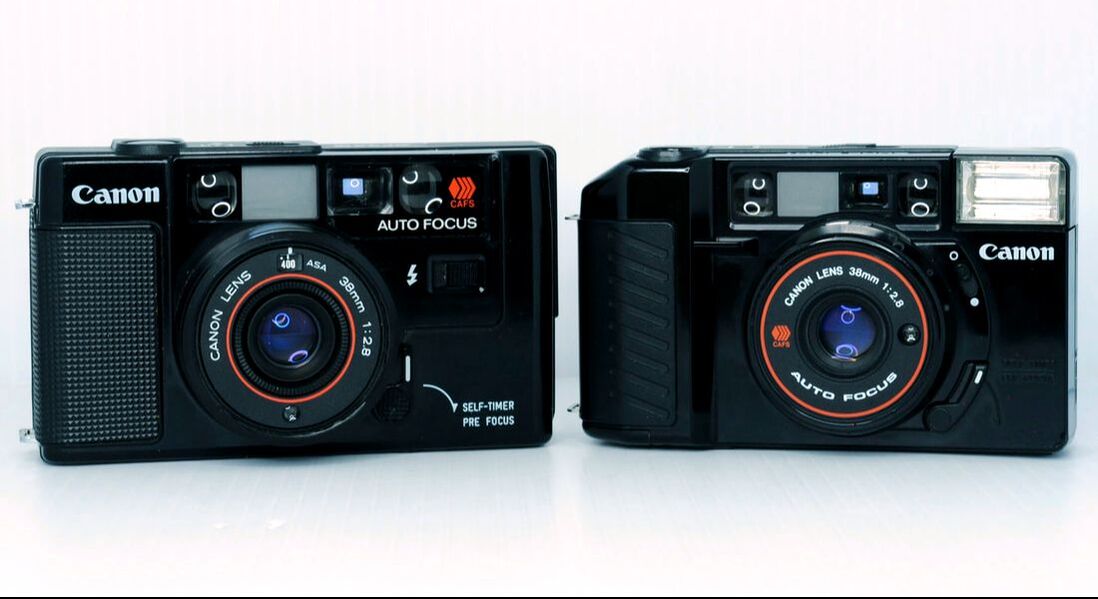
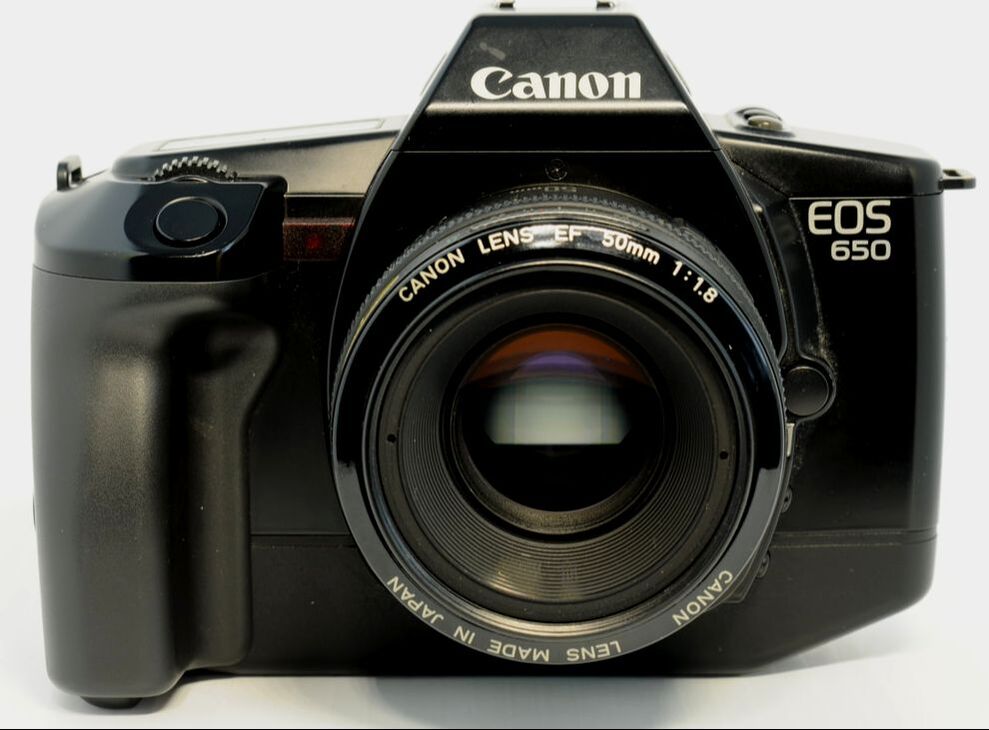
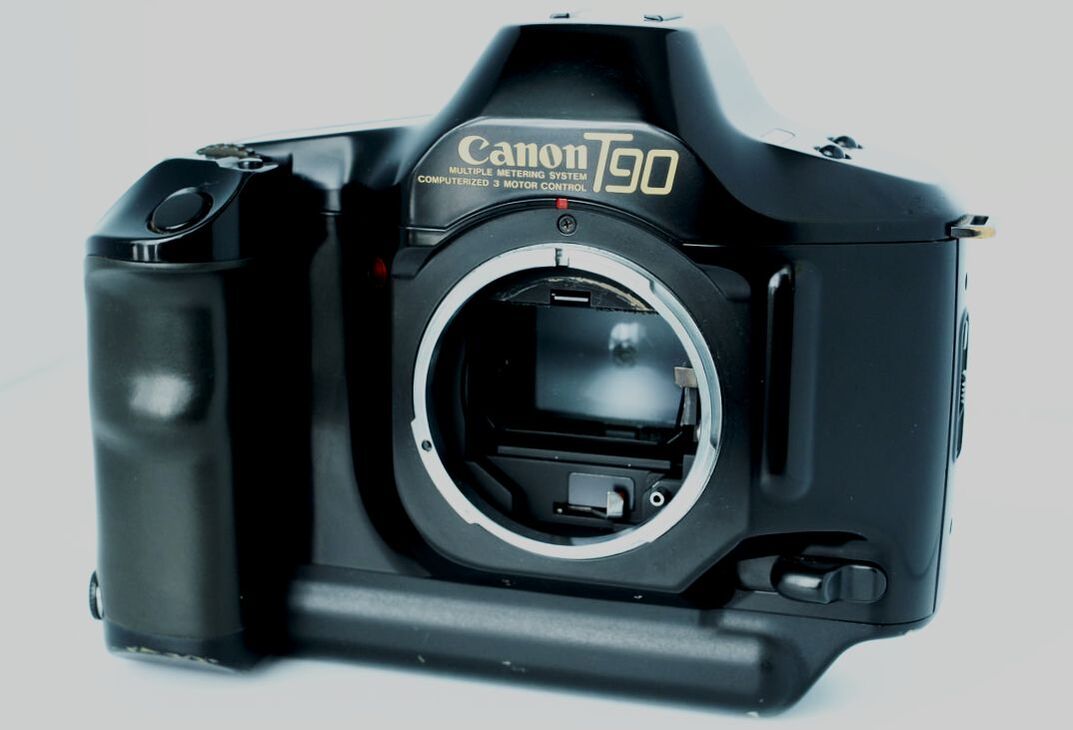
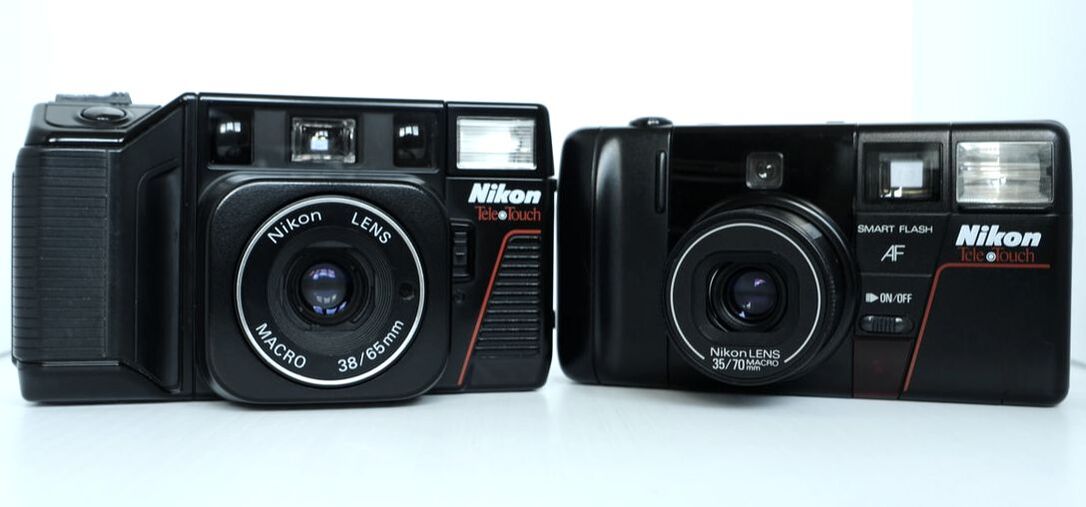
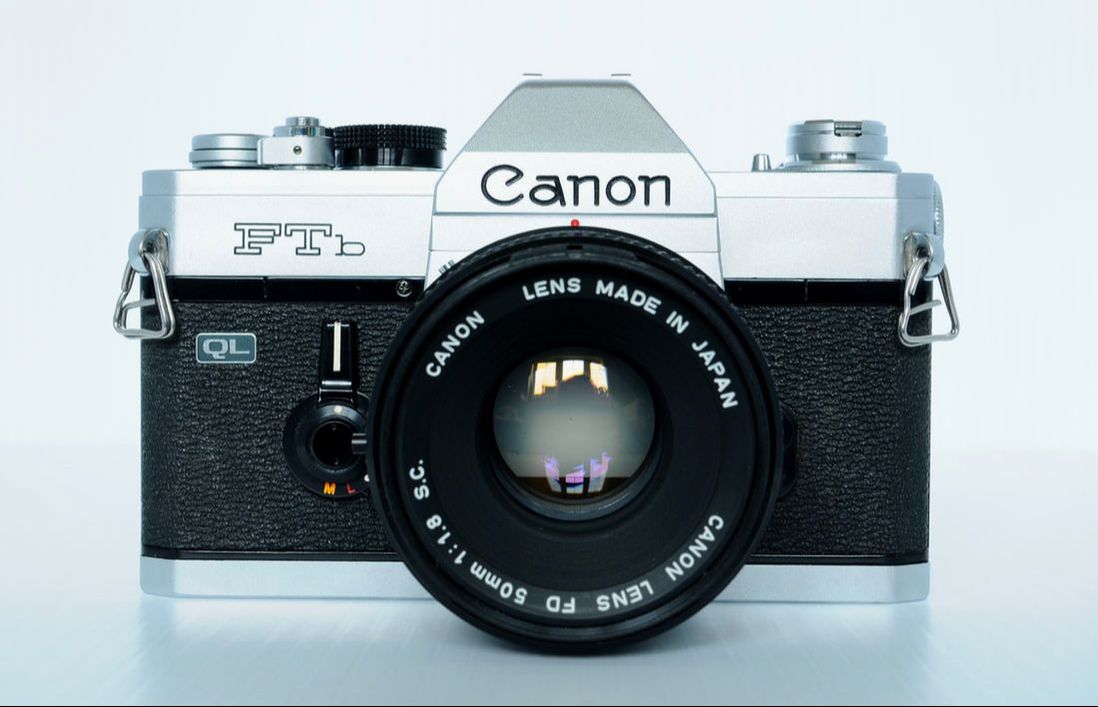
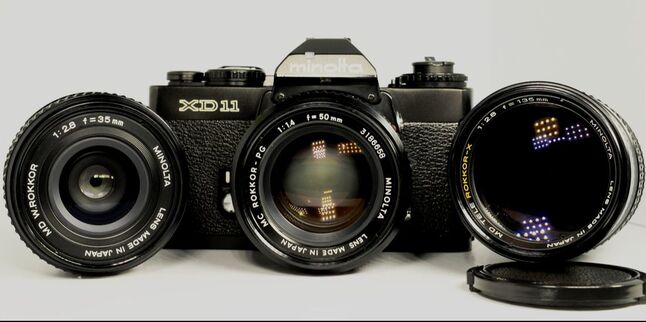
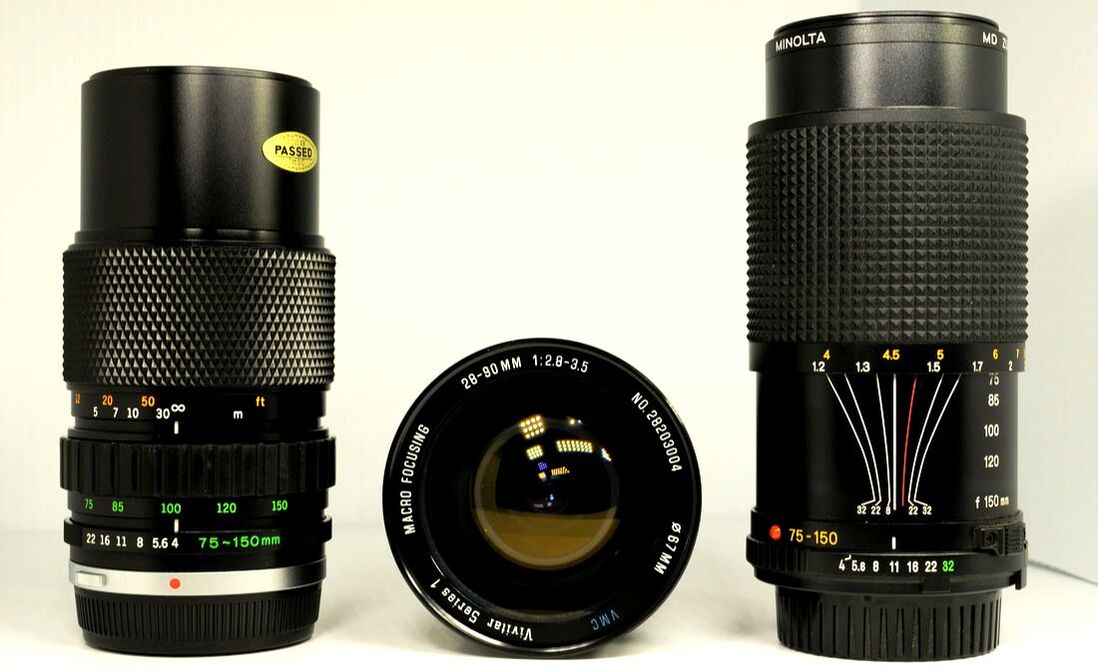
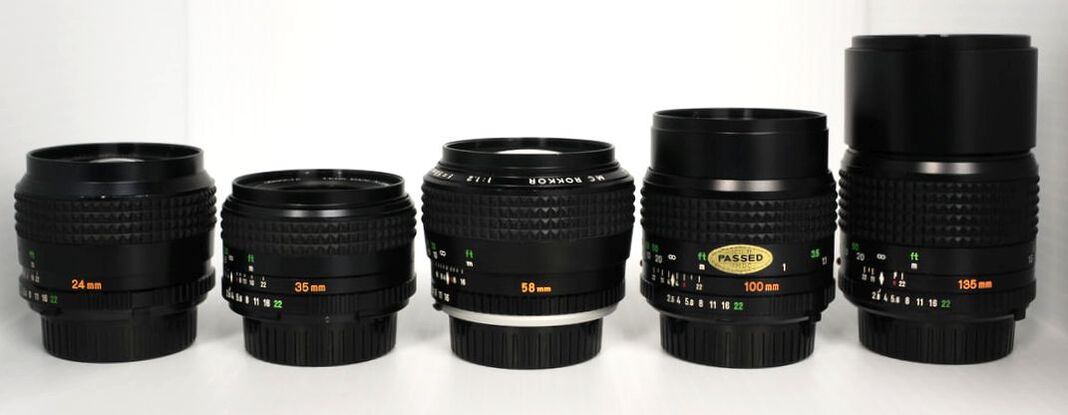
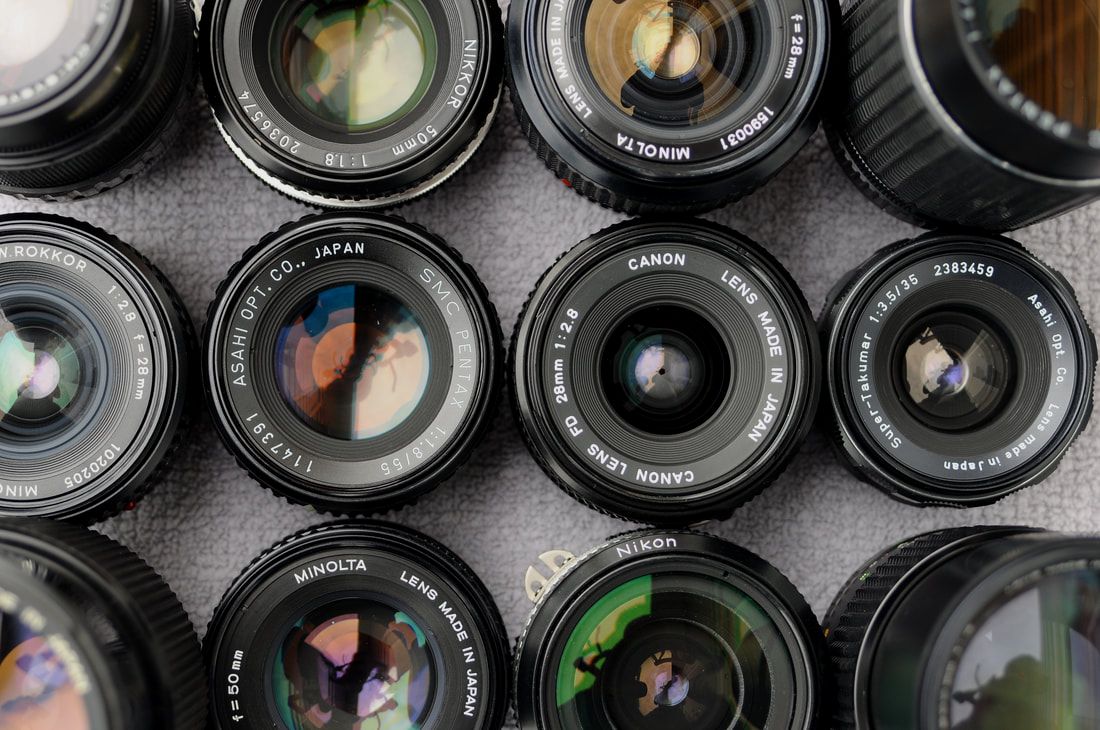
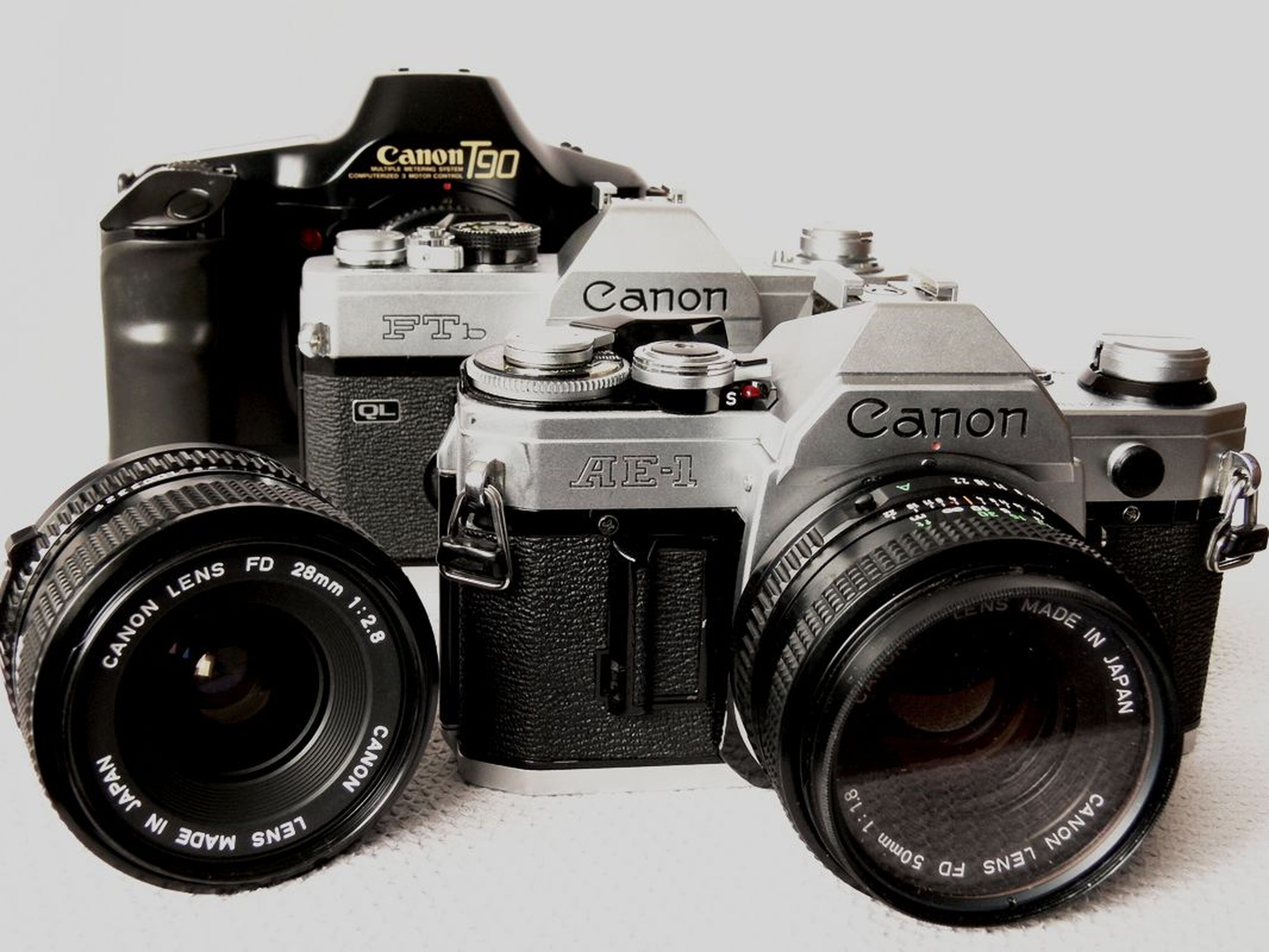
 RSS Feed
RSS Feed